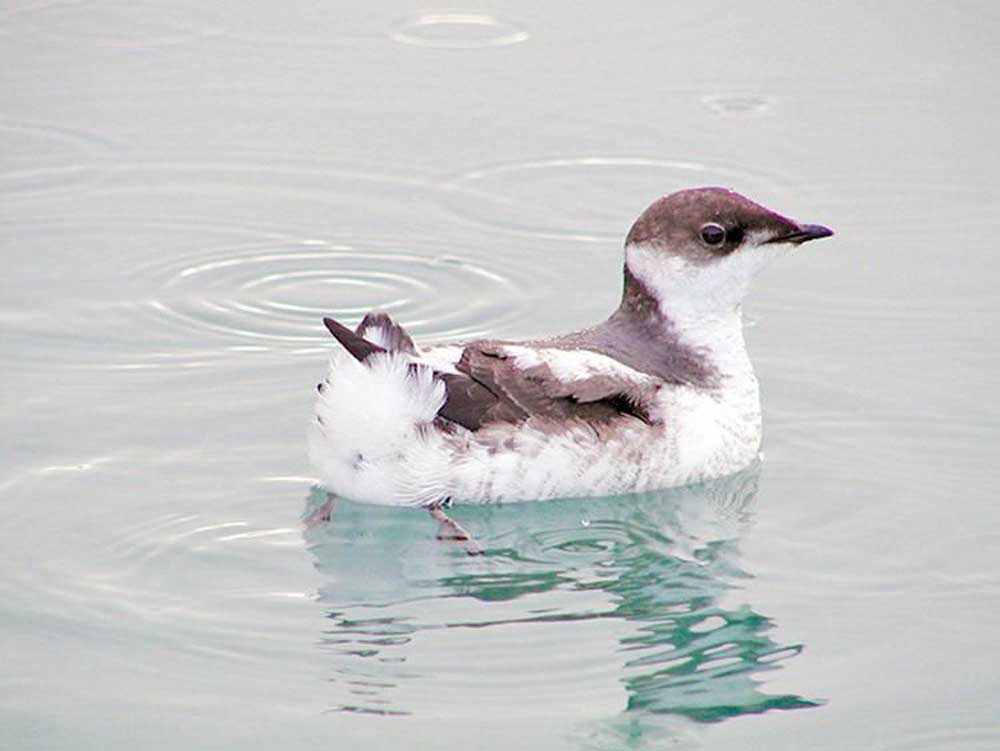ODFW Commission to revisit protections for marbled murrelet
Published 1:06 pm Tuesday, December 10, 2019

- The Oregon Fish and Wildlife Commission will reconsider listing the marbled murrelet on the state’s endangered species list.
SALEM — Oregon fish and wildlife commissioners are reconsidering whether to grant endangered species protections for the marbled murrelet, a small seabird that nests in coastal old -growth forests.
The commission voted 4-1 on Dec. 6 to revisit the status of the marbled murrelet after deciding not to “uplist” the bird from threatened to endangered in 2018.
Environmental groups petitioned the Oregon Department of Fish and Wildlife to classify the marbled murrelet as endangered in 2016. The species was listed as threatened under the federal Endangered Species Act in 1992, and listed as threatened by ODFW in 1995.
Since then, the groups — including Cascadia Wildlands, Defenders of Wildlife, Oregon Wild, the Audubon Society of Portland and Oregon Chapter of the Sierra Club — have argued the marbled murrelet could go extinct in Oregon within the next century, due in part to declining habitat from logging in state forests.
The ODFW Commission initially voted 4-2 in favor of uplisting the marbled murrelet in February 2018, ordering the agency to develop a new management plan and survival guidelines for the species in state forests where the birds nest.
But commissioners changed course in June 2018, reversing the decision and denying the environmentalists’ petition. The groups promptly sued ODFW, and earlier this year a Lane County Circuit Court judge ruled the commission violated state law by not adequately explaining the contradiction between the two results.
Now the commission will taker another look at uplisting, with meeting dates to be announced sometime next year. Bob Spelbrink, of Siletz, was the only commissioner to vote against the motion.
Quinn Read, Northwest program director for Defenders of Wildlife, said in a statement that the decision to list the marbled murrelet as endangered is a matter of science and law, not compromise or politics.
“We are encouraged by the commission’s actions today, but we will continue to demand that they follow the science, respect public process and protect this bird for future generations,” Read said.
Members of agricultural, timber and private forestland organizations also testified at the Dec. 6 commission meeting, saying the decision not to uplist was based on the best and most up-to-date science, which indicates marbled murrelet populations are on the rise in Oregon.
Seth Barnes, director of forest policy for the Oregon Forest and Industries Council, pointed to monitoring work conducted by the U.S. Fish and Wildlife Service and U.S. Forest Service between 2000 and 2017 showing marbled murrelet populations grew in Oregon by 1.8% per year.
At the same time, the National Council for Air and Stream Improvement used data from the Forest Service to analyze growth and logging of forests potentially used by the marbled murrelet.
The results found that, since 1995, coastal forests have added an average of 64,710 acres of trees 50 years or older each year.
“We have abundant habitat in Oregon,” Barnes said. “More older forest structure exists today than we’ve had in decades and continues to grow across ownership.”
Jim James, executive director of the Oregon Small Woodlands Association, said family woodland owners are dedicated to doing the right thing, but remain concerned about over-regulation.
“If this commission were to decide to uplist the murrelet, I believe the only outcome from that … is that family woodland owners would be concerned, as you would be if your 401(k) is challenged,” James said. “It would take away any incentive to have any large, old trees on your property.”
Jerome Rosa, executive director of the Oregon Cattlemen’s Association, said uplisting the murrelet could have “significant negative consequences” on grazing and access to public lands.
“In cases such as this, when data shows it is appropriate, conservation goals can be achieved without a listing,” Rosa said, referencing management plans for sage grouse and wolves in Eastern Oregon.
Joe Liebezeit, a staff scientist for the Audubon Society of Portland, said that while recent at-sea surveys do indicate a slight uptick in murrelet populations, those same scientists warn against making predictions due to fewer surveys being conducted each year.
In 2015, the Oregon State University College of Forestry began a long-term study of marbled murrelets and habitat.
Liebezeit said the team has managed to tag 101 female birds since the project got underway. Of those, only 12 went inland to nest and just five nests actually produced offspring.
About 90% of potential habitat for marbled murrelets on non-federal land in Oregon is considered “edge” habitat, meaning they are vulnerable to predators, Liebezeit added.
“The full weight of scientific evidence, including that new information from the Oregon Marbled Murrelet Project, indicates that the Oregon marbled murrelet population is in danger of extinction unless more intensive measures are taken,” Liebezeit said.






